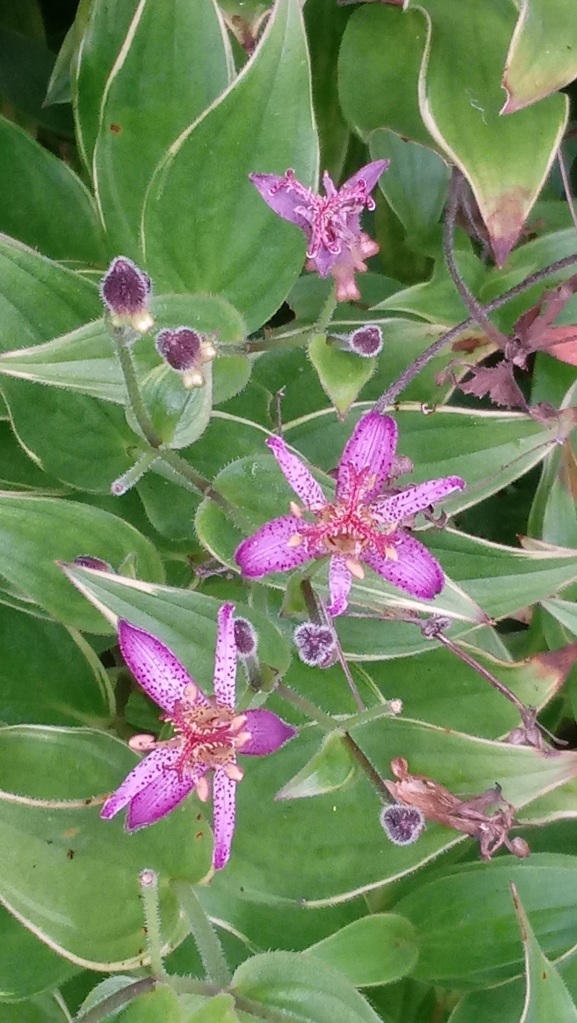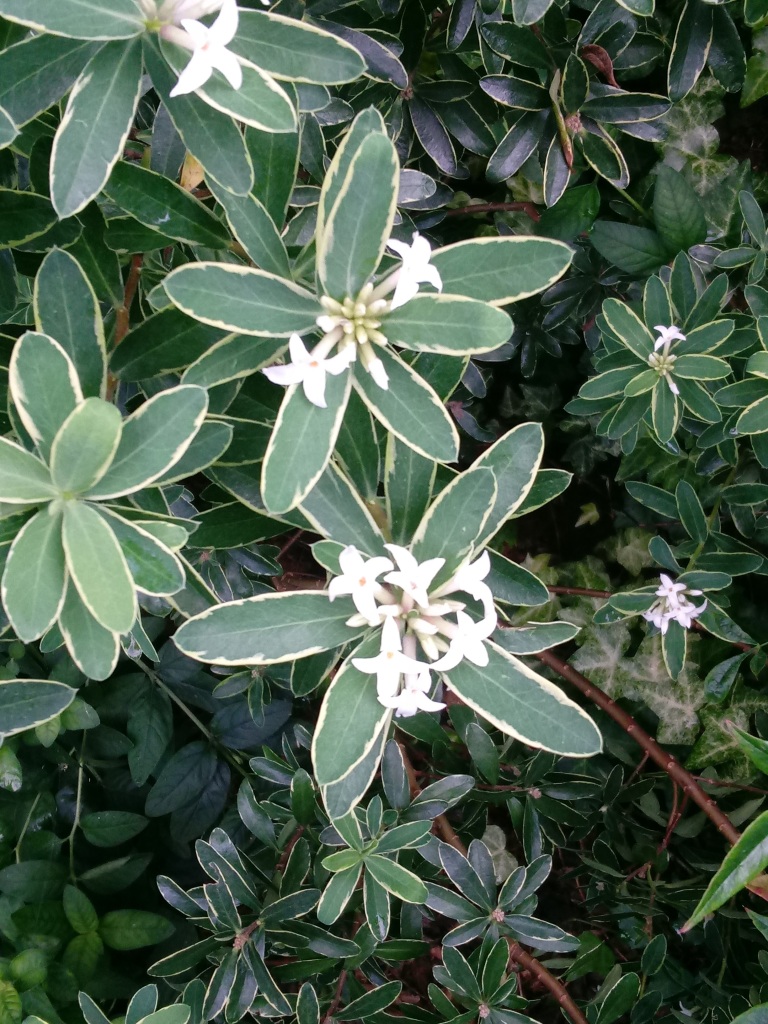Always, the gardener can find something, or many somethings to complain about. Certainly, there are a few perfect weeks, but then there’s every other day. If not the weather, which is only occasionally ideal, there are weeds, bugs, rabbits, deer, and snakes to disturb the paradise. Being of sturdy constitution, the gardener makes the best of less than ideal circumstances, and is thankful for each day.

After a brief period of typical Virginia heat in early summer, mild temperatures and plentiful rainfall have prevailed in recent weeks. Severe storms have dumped buckets of rain, with a few washouts but otherwise quite welcomed, and a few days ago disaster was averted as a tornado veered a few miles to the north.
With abundant moisture and with few periods of extreme heat, the garden has not faded as expected in a typical summer. Yes, beebalms (Monarda didyma) are mildewed, and foliage of native dogwoods (below) is spotted (though no powdery mildew, a surprise in August), but that’s a pretty short list of grievances for August. Oh, there are tent caterpillars in one of the Winterberry hollies (Ilex verticillata), but this shouldn’t amount to much and there are no plans to do anything about this minor infestation.

With plenty of moisture, weeds are a constant aggravation, and particularly nutgrass in the damp rear garden. I don’t worry at all about it invading the small areas of lawn, but as soon as small clumps are removed from the edges of planting beds, there’s more the next day, and the next. There’s always something, but any weed is easier to pull in damp soil than when it’s dry, and at least it’s not blazing hot.


We’ve got a Franlinia, but never heard of a Gordlinia or a Gordonia. Having trouble with our summer daphne slowly declining, turning brown bit by bit.
I stumbled upon a couple Gordlinias a few years ago when my Franklinia was having problems. Otherwise, I’ve never seen one for sale. I would prefer another Franklinia, but the spot where it was planted had become too damp, and there’s no space anywhere else for a tree. Still, if a larger size Franklinia had been available I would have found a spot for it. Gordlinia will become more of a very large shrub, though I keep lower branches pruned so it appears as a multi trunk small tree.
Through somewhat limited experience I’ve found that daphnes prefer dry soil and full to part. A Carol Mackie in more shade, and in competition with sweetbox is slowly declining, while hybrids Summer Ice and Eternal Fragrance thrive in sunnier spots. I was surprised a few years ago when I planted a tiny Summer Ice, expecting it would be several before it grew to amount to much. By the end of summer it more than doubled in size.